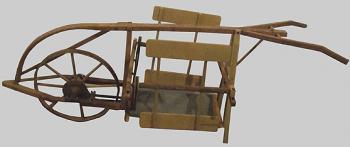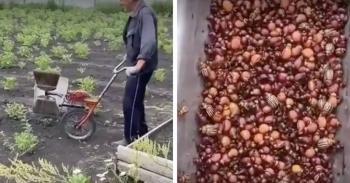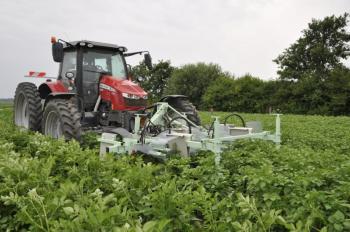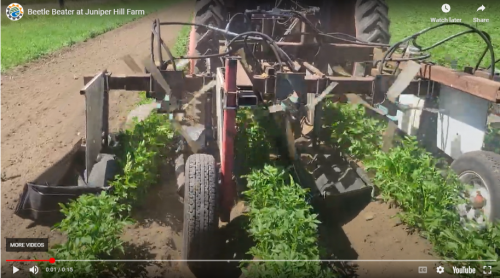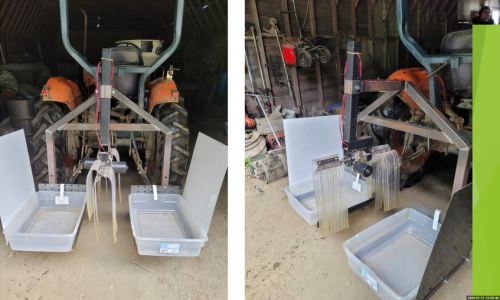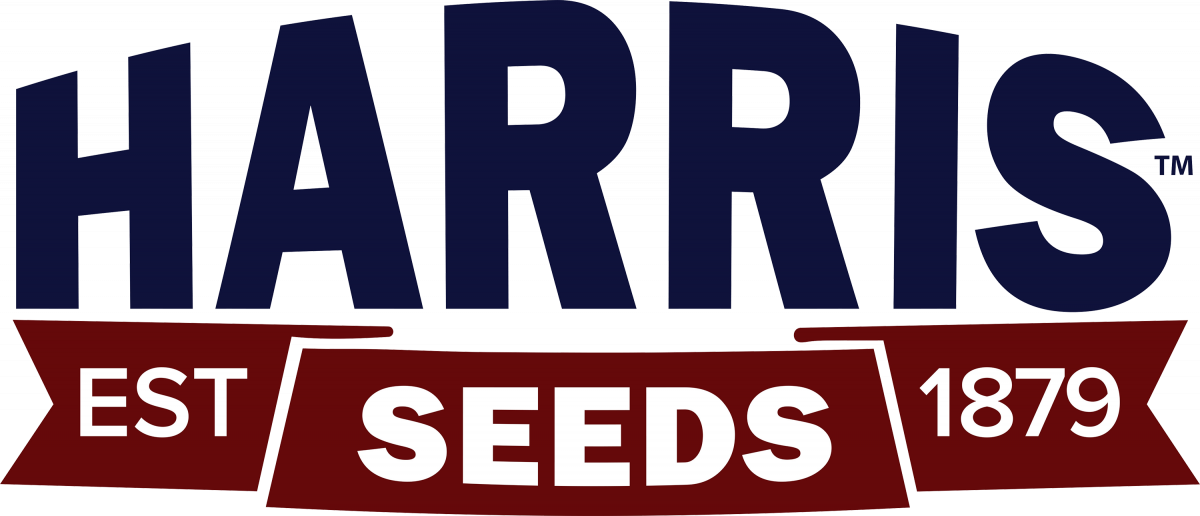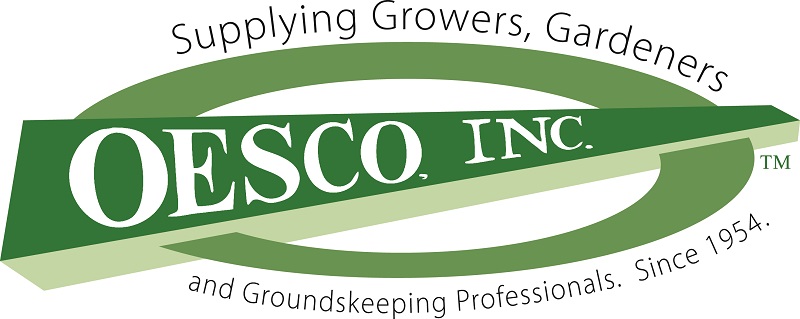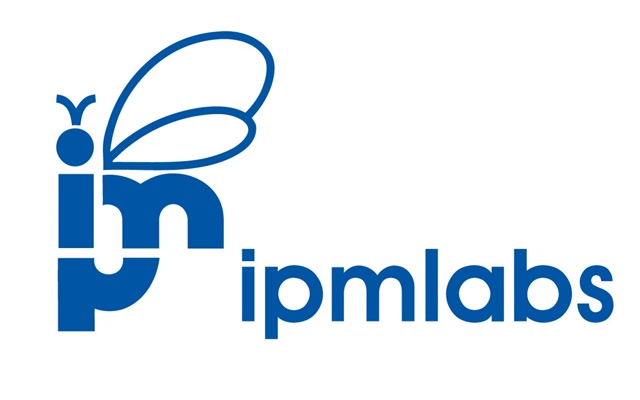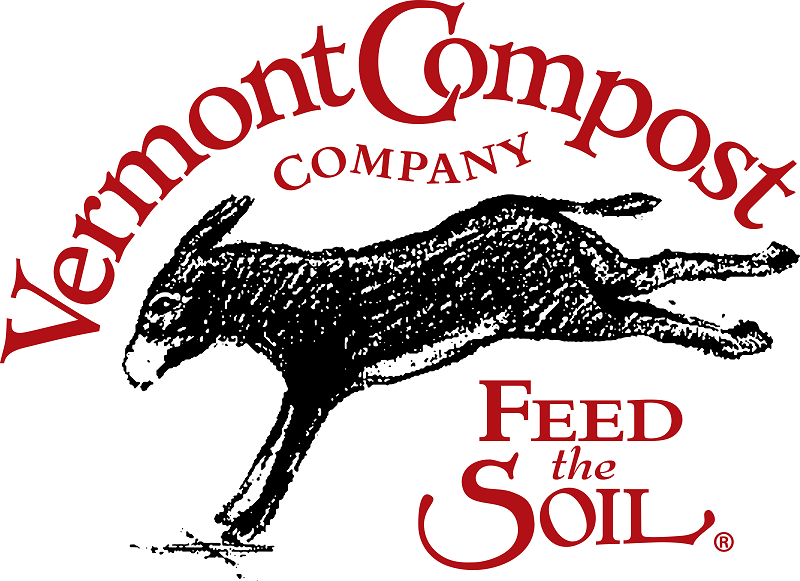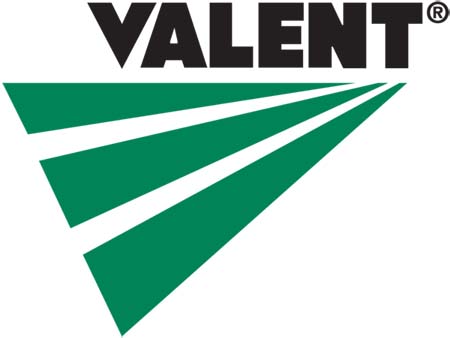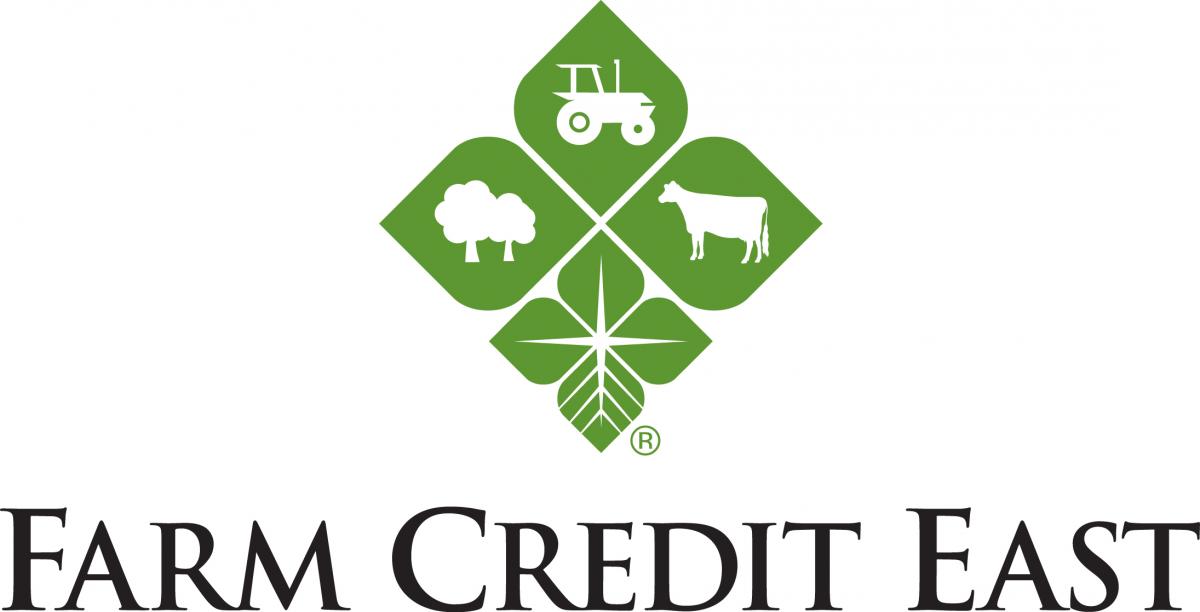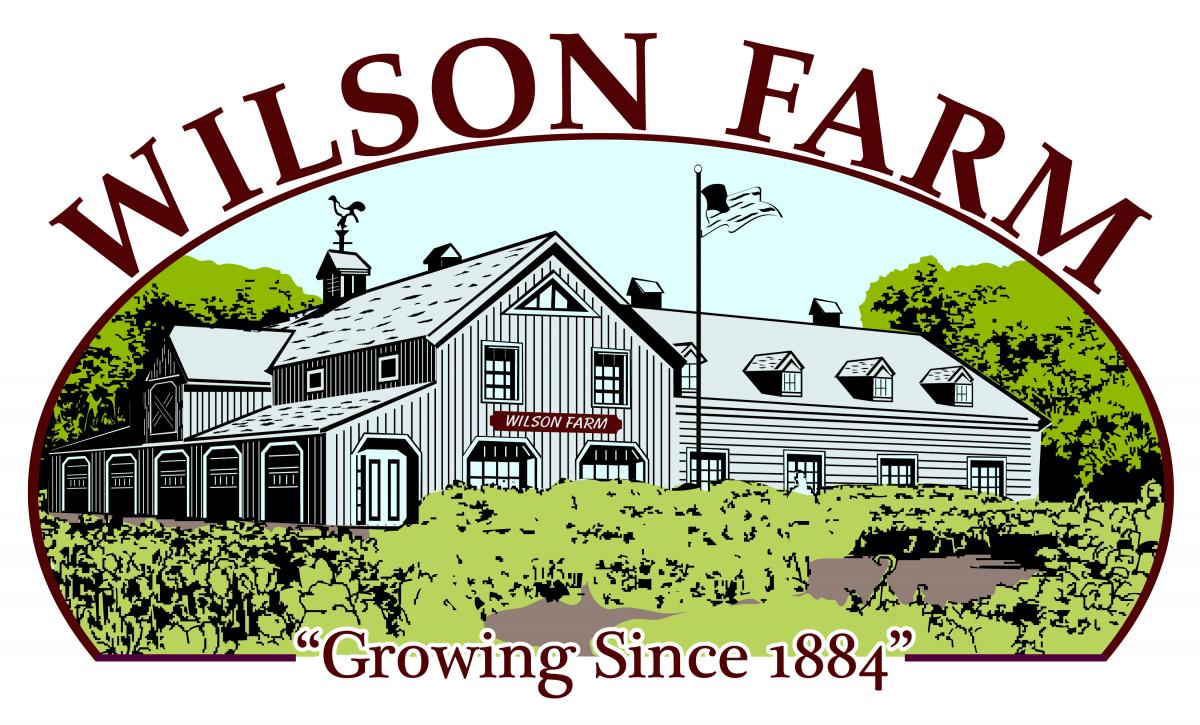To print this issue, either press CTRL/CMD + P or right click on the page and choose Print from the pop-up menu.
Click on images to enlarge.

Crop Conditions
Happy New Year! During the winter months, our team spends a good chunk of time reporting our activities to the state and federal governments and grant agencies, which fund our program. It’s always nice to look back over the year and remember all the workshops, webinars, and farm visits we made and crop mysteries we helped solve.
Now we turn the lens forward and begin planning for the coming season. As always, please share your feedback, workshop ideas, research needs, and whatever else you think would be helpful for us to hear. The mission of our Extension program is to serve the Commonwealth by supporting commercial farming in MA, so we love hearing from you directly about how we can better serve you all in stewarding the land and feeding the people with healthy, local food.
About 75% of the work listed above is grant-funded, but none of our grants directly support the production of Veg Notes. Every year, we are able to collect the funding needed for this newsletter, which we are pleased to provide to readers free of charge, with your generous donations and business sponsorships. We greatly appreciate everyone who continues to donate year after year—every bit is helpful!
Donate to Support Veg Notes by Check
Donate to Support Veg Notes Online
Here's some of what we accomplished in 2024, with the help of your donations help to fund in 2024:
- Added 2 full-time educators to the Vegetable Program, with IPM and weed science specialties
- Held or co-sponsored 13 on-farm Twilight Meetings—twice as many as in 2023!
- Delivered 16 presentations for 1,752 attendees—also twice as many as in 2023!
- Wrote 14 new Veg Notes newsletters, 6 new fact sheets (and updated at least 10 others), and published 6 peer-reviewed papers or articles
- Made >290 phone and email consultations
- Made >99 farm visits
- Organized 27 programs for 1,726 attendees
- Posted 10 new webinar recordings to YouTube
- Launched a Cut Flower Extension Program. Thanks to Hannah Whitehead for leading that project!
- Partnered with NRCS-MA to provide technical and financial assistance for IPM implementation
- With colleagues across the region, updated and printed the new edition of the New England Vegetable Management Guide and associated website. Big thanks to our own Lisa McKeag who spearheads the project!
- Conducted 8 research trials at the UMass Crop and Animal Research and Education Center in South Deerfield, MA and on a collaborating commercial farm on the following topics:
- Heat-tolerant varieties of lettuce for summer production
- Evaluating pepper varieties with resistance to Phytopthora blight
- Novel and bio-fungicides to control Phytophthora blight in peppers
- A novel insecticide to control leafhoppers in potato
- Assessing resistance to Bt-toxins in corn earworm populations in MA
- Evaluating Cucumber Varieties for Cucurbit Downy Mildew Resistance and Yield
- Evaluating Basil Varieties for Downy Mildew Resistance in the field
- Evaluating Varieties of Spinach for Winter-Production and Resistance to Downy Mildew
Sincerely,
Sue, Lisa, Genevieve, Maria, and Ali - co-editors, Veg Notes
Contact Us
Contact the UMass Extension Vegetable Program with your farm-related questions, any time of the year. We always do our best to respond to all inquiries.
Vegetable Program: 413-577-3976, umassveg@umass.edu
Staff Directory: https://ag.umass.edu/vegetable/faculty-staff
Home Gardeners: Please contact the UMass GreenInfo Help Line with home gardening and homesteading questions, at greeninfo@umext.umass.edu.
Beating Beetles Better: Mechanically Controlling Colorado Potato Beetle
--Written by Chris Callahan and Andy Chamberlin, University of Vermont Extension Agricultural Engineering. Originally published December 13, 2025 at go.uvm.edu/cpbbeater.
Controlling Colorado potato beetle (CPB) organically can be challenging, as the bugs have developed resistance to the many pesticide options available on the market. Lack of control has persuaded some farms to stop growing potatoes altogether.
This insect has been a challenge for centuries. As seen in the Prince Edward Island historical museum, this antique device from the 1890s was human-powered and used physical force to knock the bugs off the plants. This machine was called the Hunter Bug Picker.
Fundamental Design
The basic approach to developing a better beetle beater includes the following:
- Rolling structure – Square stock toolbar with 3-point hitch mounted to a tractor, human-powered lightweight frame, etc.
- Rotational power – Electric or hydraulic motors on tractor mount systems, ground driven with transmission for human-powered.
- Beater Paddles – Broom ends or “strip brush” segments like those used as large truck or RV “rock guards” or vinyl strip door material like those used in coolers.
- Collection – Chutes, “hoods”, or funnels, made of steel or plastic to direct beat beetles into a collection tub, bin, or tarp for disposal.
- Optional: Connect to a PTO-powered vacuum (e.g., vacuum planter fan) with a collection container to capture the bugs out of the collection pan or funnel.
Examples
Modern Walk Behind Device:
Recent variations of this approach have been attempted, including this device. It is homebuilt with some bicycle parts and a broom.
Large Scale Models
Equipment manufactures are starting to experiment with manufacturing a machine to complete this task, both as a front or rear mounted implement.
Juniper Hill Farm – Adam Hainer
Adam Hainer of Juniper Hill Farm in Wadhams, NY took matters into his own hands to construct a machine. An overview of the parts used are listed below.
-
Hydraulic Motor
Source: onehydraulics.com
Cost: $1090.75
Item: BMPH-50-H2-K-P
Specs:
Dynamic LSHT Motor
51.7cc
1150RPM
885in-lb, 2031psi Differential
15.85GPM
SAE A 2-Bolt Mount
1″ Bore x 1/4″ Key Shaft
Side Ported
1/2″ NPT × 6
Cost: $1090.75 -
Flow Divider
Source: Summit-Hydraulics.com
Item #FD50-45-6T-N-44 Hydraulic Pump Flow Divider / Combiner, 50:50, 2.5-10 GPM (3)
Adam notes that the speed control is needed as he needed the paddles to move faster to increase ground speed.
Click here for a video of the Bug Beater at Juniper Hill Farm.
Deep Meadow Farm – Jon Cohen
In this video, Jon explains how he built his version of a beetle beater after trying every other treatment he knew of with no luck.
References
- 2016 Organic Production and IPM Guide for Potatoes. Cornell University. https://ecommons.cornell.edu/server/api/core/bitstreams/0d0ae1e5-7e99-44...
- PEI Potato Bug Picker – Artifacts of Prince Edward Island Community Museums
- Mechanical Potato Bug Picker – Canada Agriculture and Food Museum
- Man Creates Device to Sweep Colorado Beetles Off of His Crop
- The guy didn’t like collecting handmade Colorado potato beetle, he invented this tweak
- New machine for sustainable pest control in potatoes: the Colorado Beetle Catcher – PotatoWorld Magazine
- Machine catches Colorado potato beetles – Future Farming
- https://scialert.net/fulltext/?doi=jas.2006.919.925
- https://www.semanticscholar.org/paper/Thermal-initiation-of-thanatosis-t...
Biocontrol Basics & Planning
 Biological control, also known as biocontrol, is the process of using the natural enemies of pests to manage their populations. This can allow for reduced pest pressure while decreasing reliance on chemical pesticides, along with their associated risks and cost. This can involve a wide variety of organisms, such as using an insect to control weeds or using fungi to control insect pests, but this article will focus primarily on using beneficial arthropods (including insects, spiders, and mites) to control invertebrate pests. Because biocontrol involves the use of complex living organisms, each with their own strengths and limitations, it can be daunting to try to work out how best to incorporate it into your pest management plan. Even those who are familiar with biocontrol and have been using it for years are likely still working out how to improve its efficacy. For those with experience in the fundamentals of biocontrol, click here to jump to some tips for avoiding common pitfalls in biocontrol implementation. However, with a good understanding of your farm and the principles of biocontrol, it can be an effective useful tool in your integrated pest management toolbox.
Biological control, also known as biocontrol, is the process of using the natural enemies of pests to manage their populations. This can allow for reduced pest pressure while decreasing reliance on chemical pesticides, along with their associated risks and cost. This can involve a wide variety of organisms, such as using an insect to control weeds or using fungi to control insect pests, but this article will focus primarily on using beneficial arthropods (including insects, spiders, and mites) to control invertebrate pests. Because biocontrol involves the use of complex living organisms, each with their own strengths and limitations, it can be daunting to try to work out how best to incorporate it into your pest management plan. Even those who are familiar with biocontrol and have been using it for years are likely still working out how to improve its efficacy. For those with experience in the fundamentals of biocontrol, click here to jump to some tips for avoiding common pitfalls in biocontrol implementation. However, with a good understanding of your farm and the principles of biocontrol, it can be an effective useful tool in your integrated pest management toolbox.
Biocontrol Strategies
Biological control encompasses multiple pest management strategies, each best suited for different situations:
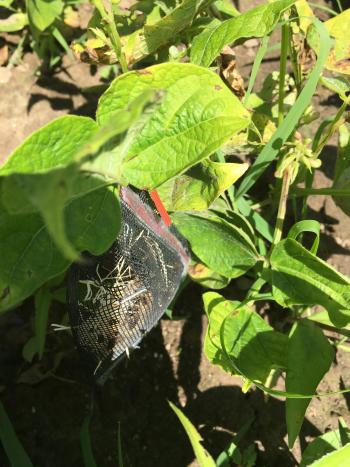 Augmentative biological control involves the introduction of a natural enemy species to an environment where they do not occur naturally. These natural enemies are typically mass-produced commercially in laboratories and can be ordered for direct release onto crops. However, this method does require careful selection of the right species to target specific pests, as well as consideration of appropriate release rates and compatibility with other species and chemicals in use on your crops. Additionally, these natural enemies are not likely to stick around on their own. Without high prey densities, natural enemies will starve or leave the area to find other sources of food, which means you will need to continue releasing natural enemies periodically. Natural enemies will flee more readily in more open growing conditions, making augmentative biocontrol most effective in closed systems such as greenhouses.
Augmentative biological control involves the introduction of a natural enemy species to an environment where they do not occur naturally. These natural enemies are typically mass-produced commercially in laboratories and can be ordered for direct release onto crops. However, this method does require careful selection of the right species to target specific pests, as well as consideration of appropriate release rates and compatibility with other species and chemicals in use on your crops. Additionally, these natural enemies are not likely to stick around on their own. Without high prey densities, natural enemies will starve or leave the area to find other sources of food, which means you will need to continue releasing natural enemies periodically. Natural enemies will flee more readily in more open growing conditions, making augmentative biocontrol most effective in closed systems such as greenhouses.
Augmentative biocontrol can be used curatively or preventatively. When used curatively, the technique is called "inundative" biological control and natural enemies are released to manage an existing pest outbreak. However, inundative biocontrol is significantly more costly and less likely to be effective than introducing natural enemies preventatively. Pests reproduce quickly, and by the time you notice an outbreak, place an order, and receive your biocontrols, pest pressure may already be too high for those natural enemies to control. However, a stable population of natural enemies released periodically can target smaller pest hotspots and prevent outbreaks before they begin.
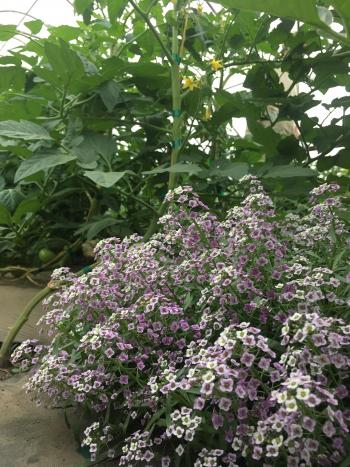 Conservation biological control is another strategy with the same goal of creating stable populations of natural enemies that can reduce pest pressure, but focuses on modifying the environment to provide resources which attract and support natural enemies that are already present. This often involves creating semi-natural habitats such as flower strips or hedgerows on a farm to attract the many beneficial insects, including both natural enemies and pollinators, which rely on floral resources like pollen and nectar as food or native perennials as overwintering shelter. It also relies on minimizing the use of broad-spectrum insecticides, especially those with long residual periods, which can harm beneficial insect populations.
Conservation biological control is another strategy with the same goal of creating stable populations of natural enemies that can reduce pest pressure, but focuses on modifying the environment to provide resources which attract and support natural enemies that are already present. This often involves creating semi-natural habitats such as flower strips or hedgerows on a farm to attract the many beneficial insects, including both natural enemies and pollinators, which rely on floral resources like pollen and nectar as food or native perennials as overwintering shelter. It also relies on minimizing the use of broad-spectrum insecticides, especially those with long residual periods, which can harm beneficial insect populations.
This strategy can make use of a wider set of natural enemies than the relatively small subset which are commercially sold, including predators and parasitoids of some pests which cannot yet be controlled by augmentative means. Conservation biological control is most effective in open environments where large populations of beneficial insects are naturally present, but it may be used to an extent in semi-closed systems such as high tunnels where side walls are frequently raised and unscreened. Compared to augmentative biological control, this strategy requires fewer recurring inputs once natural enemies are established, but the labor and expenses associated with maintaining these habitats may be substantial depending on the type of habitat and how well-suited it is for the environment. Additionally, this strategy is more indirect, making it more difficult to predict exactly which organisms will make use of the habitats and resources provided, some of which may be pests. Over time, however, natural enemies can become established and help keep populations of a wide variety of pests at acceptable levels. Achieving this balance may take several years of trial and adjustment.
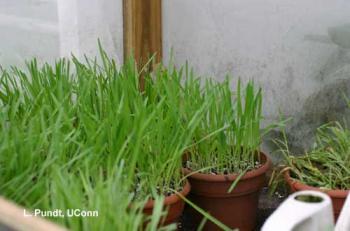 Banker plants, also known as guardian plants, combine elements of both augmentative and conservation biocontrol. Sacrificial plants harboring an innocuous prey species which does not infest the crops being grown, e.g. barley infested with bird cherry-oat aphids, are placed near crops. These prey support a sustained population of natural enemies which can respond to and prevent outbreaks of aphid pests in the crops themselves, reducing the need for regular releases of natural enemies. However, maintaining a balance between populations of the prey species, natural enemies, and other factors like hyperparasitoids which prey on natural enemies, can be challenging.
Banker plants, also known as guardian plants, combine elements of both augmentative and conservation biocontrol. Sacrificial plants harboring an innocuous prey species which does not infest the crops being grown, e.g. barley infested with bird cherry-oat aphids, are placed near crops. These prey support a sustained population of natural enemies which can respond to and prevent outbreaks of aphid pests in the crops themselves, reducing the need for regular releases of natural enemies. However, maintaining a balance between populations of the prey species, natural enemies, and other factors like hyperparasitoids which prey on natural enemies, can be challenging.
Choosing Natural Enemies
While some natural enemies are generalists that feed on a broad range of prey types, many are specialists that feed on only a few prey species. Therefore, the first step in choosing the right natural enemies for your farm is to identify the pests you hope to target. Commercial biocontrol products are available for most common greenhouse and high tunnel pests, including aphids, fungus gnats, mites, and thrips, and new biocontrol products are continuously being developed. Biocontrol suppliers’ websites and catalogs provide information about the natural enemies they offer and the pests they control. There may be several biocontrol options available for some pests, each with varying costs, compatibility, and ideal environmental conditions. See the end of this article for a list of a few major biocontrol suppliers.
Natural enemies fall into two main categories: predators and parasitoids. Predators, such as lady beetles and green lacewings, capture and consume their prey directly. Many predators are generalists, meaning they will opportunistically feed on a wide range of prey types. This can be beneficial if you're targeting multiple pests or are unsure of the exact pest species present in your greenhouse. Generalists can also subsist on alternative prey when the primary pest is not present, but this alternative prey may include other natural enemies, potentially causing conflicts with other biocontrol agents. Conversely, parasitoids are specialists that lay eggs inside of host prey, where the larvae hatch and consume the host from within, eventually killing it. While parasitoids need to be carefully matched to the specific pest you wish to target, they are less likely to affect non-target species and can be used alongside other specialist biocontrol agents. Specialists like parasitoid wasps also tend to be more effective at seeking out pests at lower densities
Other important factors to consider when choosing natural enemies include mobility and optimal environmental conditions. Highly mobile predators such as adult lady beetles are adept at dispersing amongst crops but may readily escape the area. Less mobile options, like lacewing larvae and predatory mites, tend to stay within the treated crops but may require more effort to distribute evenly across the growing space. Additionally, different species have varying environmental preferences. To achieve the best results, select biocontrol agents that are known to perform well at the temperature and humidity conditions of your growing space during the time of year they will be used. If necessary, you may adjust the environment to meet the optimal conditions for your chosen species.
For conservation biological control approaches, consider which naturally occurring predators or parasitoids prey on the type of pests you wish to control, then identify which habitat management practices can help support those natural enemies. For instance, planting sweet alyssum inside a high tunnel can attract hover flies, whose larvae are voracious aphid hunters. To target soil pests, however, beetle banks can be created to provide refuges for predators like ground beetles. For more information, see the Xerces Society’s resources for conservation biological control.
Tips for Success
-
Follow recommended release rates. Use the release rates provided by your supplier based on the size of your growing space. If natural enemy densities are too low, they will not be able to keep up with pest population growth rates, and pest pressure may increase despite the presence of natural enemies.
- Plan ahead. Biological control strategies work best as a preventative measure to avoid pest outbreaks. However, it may take several days or more to determine which biocontrols to use, then order, receive, and release them. Depending on the species and life stage of your biocontrol agents, you may also need to account for the time it takes for them hatch, emerge, or otherwise become effective. Because of this, you should plan your biocontrol approach well in advance of when you expect pests to appear.
- Release natural enemies soon after you receive them. Biocontrol agents are live organisms and cannot be stored for long periods. For the best results, plan to have them arrive when they are needed, and release them as soon as possible after receiving them. If you need to wait before releasing them, ensure that you are following proper storage guidelines.
- Ensure compatibility of biocontrols and chemical products. Releasing incompatible natural enemies in the same space can result in predators feeding on each other, undermining biocontrol efforts. Broad-spectrum insecticides can also kill or reduce the performance of natural enemies. To minimize negative impacts, apply insecticide sprays that affect natural enemies well before releasing biocontrol agents, allowing time for the insecticide's residual effects to dissipate. Spot treatment of pest hotspots can also help conserve natural enemies if a biocontrol program is active.
When integrated properly into a broader integrated pest management (IPM) strategy, biological control can be an effective and sustainable tool for managing pests while reducing the need for chemical pesticides. However, it requires careful planning to be most effective. Now is a great time to evaluate how biological control can enhance your IPM plan for the upcoming season and contribute to long-term pest control success.
Additional Resources
-
UMass Extension Greenhouse Crops and Floriculture – Banker Plants with Aphids
-
Biocontrol Suppliers:
--Written by Ali Shokoohi, UMass Extension IPM Specialist
2025-2026 New England Vegetable Management Guide Now Available!
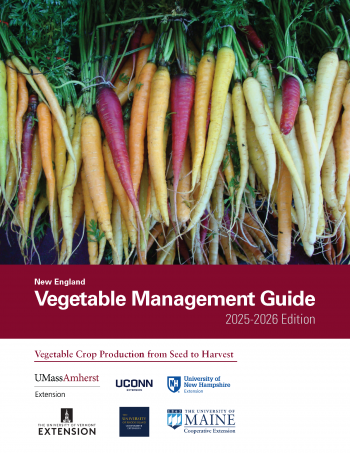 The New England Vegetable Management Guide is a comprehensive guide to current production and pest management techniques for commercial vegetable crops. There are in-depth sections on cultural practices, vegetable transplant production, integrated pest management for insects, weeds, and diseases, and on individual vegetable crops. An online version can be accessed at no cost here: nevegetable.org. It has a new look but is at the same web address as the previous guide, and has all of the same content as the hard copy.
The New England Vegetable Management Guide is a comprehensive guide to current production and pest management techniques for commercial vegetable crops. There are in-depth sections on cultural practices, vegetable transplant production, integrated pest management for insects, weeds, and diseases, and on individual vegetable crops. An online version can be accessed at no cost here: nevegetable.org. It has a new look but is at the same web address as the previous guide, and has all of the same content as the hard copy.
Cost is $40.00 plus shipping. The Guide can be purchased on its own or in combination with the Northeast Vegetable & Strawberry Pest ID photo guide for $50.
News
Respond by tomorrow! MDAR Farmer Survey on Climate-Related Losses
MDAR is gathering information from farmers about weather-related losses in 2023 and 2024. Responses will help the state determine how much funding to request from the federal government to help cover these losses. Farmers: Report 2023 and 2024 weather-related damage to support upcoming disaster relief program by January 17, 2025.
Click here to respond to the survey
In late December, Congress passed a budget bill that included funding to provide relief to farmers in eight states – New England, Alaska, and Hawaii – for losses as a result of climate-related factors incurred during 2023 and 2024. Each state is being asked to estimate total losses and develop a program to disburse the funds among farmers. Your response to this survey will help us determine how much funding the state should request from the federal government, and what types of losses coverage is needed for. Questions ask about losses due to particular events in these two years, as well as loss due to longer-term stresses exacerbated by weather conditions in these two years. Examples of types of losses we are gathering information about include, but are not limited to:
- Production losses.
- Damage to infrastructure such as buildings, hoop houses, fences, or roads.
- Increased production costs due to pressure from invasives.
- Losses due to soil contamination.
- Physical damage to cropland.
- Increased cost of inputs, such as feed.
Following the state responses, USDA will develop a formula for distributing block grants to states, and MDAR will design and implement a program for Massachusetts farmers to apply for consideration for funding. It is anticipated that demand will exceed available resources, so not all losses will be covered. Awardees will likely be asked to provide receipts and other records related to any losses in anticipation of any verification or audit requirements related to this program.
At this stage of the process it is most important that we collect information to illustrate the total scope of losses. Please respond to the survey even if you have received grants, loans, or insurance payments related to the indicated losses. When launched, the program application will take those payments into account.
Responding to this survey does not guarantee access to or eligibility for funding. Parameters of the program at both the state and federal level are still being refined, and some of the types of loss indicated on this survey may not ultimately be eligible for payment in the program. All responses are subject to Massachusetts Public Records Law. Your response to this survey can be anonymous, but respondents have the option of including their email addresses to ensure timely notification of the launch of the program. Program announcements will be circulated widely through all MDAR channels and stakeholder partners.
Questions? Contact MDAR Deputy Commissioner Winton Pitcoff at Winton.Pitcoff2@mass.gov.
UMass Extension is Hiring - Small Fruit Specialist
Priority application deadline: Friday, January 31, 2025
Full position description and application: https://careers.umass.edu/amherst/en-us/job/525901/small-fruit-extension...
UMass Extension is recruiting a Small Fruit Specialist to join our Fruit Team. The Fruit Team currently consists of a faculty entomologist, a faculty fruit and vegetable specialist, an Extension Educator specializing in tree fruit horticulture, and an Extension Educator with tree fruit pathology and IPM expertise. We are searching for someone to specialize in small fruit (strawberry, blueberry, brambles, grapes, and others) to complete our team. Please note that cranberries are not included here as they are covered by our specialists at the Cranberry Research Station in Wareham.
The Small Fruit Specialist will develop Extension educational programming and publications, and conduct applied research to meet the needs of small fruit growers statewide. They will work to enhance the economic, human, and environmental health of the small fruit industry in Massachusetts. They will provide unbiased, research-based information, publications, and education programs in the areas of small fruit production, cropping systems and diversification, crop health, and Integrated Pest Management. Our primary goal is to facilitate the improvement of small fruit production in Massachusetts and provide new opportunities to growers to expand competitive, quality offerings to their markets, e.g., supermarkets, farm markets, roadside stands, and u-pick operations.
The ideal candidate should be team oriented and independently motivated. They should also be able to converse, and build relationships with fruit growers. The position will be based on the UMass Amherst campus; however, the candidate must be willing to travel state-wide and open to collaborating with colleagues throughout the Northeast and possibly beyond.
We look forward to having a Small Fruit Specialist join our fruit team! The position description and application instructions can be found at https://careers.umass.edu/amherst/en-us/job/525901/small-fruit-extension....
Questions? Contact Jon Clements, jon.clements@umass.edu.
Lotta Agricultural Fund Offers Interest-Free Loans for Graduates of UMass Amherst
Charlotte Mignon "Lotta" Crabtree (November 7, 1847 – September 25, 1924), was a well-known American actress, entertainer, comedian, and philanthropist. Before her death in 1924 she established several charitable funds to promote veteran affairs, the performing arts, animal welfare, and agriculture, including the Lotta Agricultural Fund. The Lotta Agricultural Fund was established to provide interest-free loans to graduates of the then Massachusetts Agricultural College (Mass Aggie), which has since grown to become the University of Massachusetts Amherst. The fund has supported many farmers over the years and continues to provide 0% loans of up to $100,000 to support UMass alumni and their agricultural food production enterprises. Applications are accepted year-round. To be eligible, you must hold a degree from UMass Amherst.
For more information on this program, or with questions about applying to the Lotta Agricultural Fund visit the Lotta Agricultural Fund website or contact Amanda Brown, amandabrown@umass.edu.
MDAR Exploring Interest in Spanish Language Course
In 2024, MDAR conducted a Beginner Spanish for Farmers Market Managers Course to enhance language access at farmers markets. This year, MDAR is collecting information to better understand additional language needs at farms and farmers' markets, and to explore interest in a second iteration of a Spanish course for farmers and farmers' market managers.
If you are interested in such a course, please click here to complete this survey.
Questions? Contact Rebecca Davidson, rebecca.davidson@mass.gov
Events
3rd Annual Cornell Winter Cut Flower Webinar Series
When: Tuesdays, January 7 – February 4, 2025, varying times
Where: Zoom
Registration: $60 for all 5 sessions, $20 for single sessions. Scholarships available for Extension staff (contact Dara Boudreaux, 518-765-3518 or tff24@cornell.edu) and veterans. Registration support: 518-765-3518 or email cce-caahp@cornell.edu.
This is a very popular series of online events you won’t want to miss, with topflight speakers, a wide variety of subjects concerning growing cut flowers and plenty of interaction between speakers and attendees. Speakers include Extension researchers, farmers, and florists, from inside and outside the US. Webinars will be recorded, and all the recordings will be sent to registrants for future review.
- January 7, 1-3pm: Botrytis Management of Cut Flowers; Tips on Propagating Plants That are Grown for Cut Flowers
- January 14, 1-4pm: Growing Early Season Flowers in High Tunnels; Cover Crops for Sustainable Flower Production; Cover Crop Trials on Flower Farms
- January 21, 1-3pm: The Art of Drying and Pressing Flowers with Old Tavern Farm; New Varieties for 2025 that Will Help You stand out in the Market; Improving Postharvest Longevity of Dahlia and Zinnia Cut
- January 28, 9am-12pm: The Challenges of Lisianthus Commercial Cultivation in Taiwan; Wildcrafting and Ethical Use of Invasive Plants, Vines, and Shrubs; Growing Cut Flowers in Containers
- February 4, 1-3pm: Cut Out Cut Flower Diseases!*; Bad Bugs Bothering Blooms*
* Pesticide recertification credits will be provided.
Questions? Contact Jingjing Yin, jy578@cornell.edu or 518-429-8608.
Cornell Rice Growing Workshop Series
When: Fridays, January 24, February 7, and March 7, 2025, 2:30-4:30pm
Where: Zoom
Registration: $75 for all 3 sessions. Click here to register.
Learn about rice farming opportunities for the northeastern U.S. Join us for a 3-session online workshop series via Zoom. All presentations will be recorded and available to attendees for future reference.
January 24: A Feathered Fortress: The Duck-Rice Aigamo System for Flood-Resilient Agriculture
The Aigamo system, an ancient Japanese farming practice, offers a sustainable and eco-friendly approach to rice cultivation. By integrating ducks into the rice paddies, farmers can significantly reduce their reliance on pesticides and chemical fertilizers. Erik Andrus (Rice Farmer at Boundbrook Farm in Vermont) and Oscar Leiber (Cornell Cooperative Extension Summer Intern that researched Aigamo systems in Japan) will share their experiences on how the Aigamo system could provide a compelling model for sustainable agriculture, demonstrating the power of nature-based solutions that can be integrated into flood-resilient agriculture in the northeastern U.S.
- February 7: Sourcing Rice Farming Equipment for American Small Farms
- March 7: Growing Rice as a Vegetable: Drip-Irrigation Methods versus Flooded Fields
UConn Vegetable Production Certification Course
When: January 27 – March 11, 2025. Asynchronous course, to work through at your own pace online.
Where: Online
Registration: $149. Register by January 20, 2025. Click here to register.
UConn Extension is offering a Vegetable Production Certificate Course, designed for new and beginning farmers who have 0-3 years of vegetable growing experience or no formal training in agriculture. The participants will learn answers to the basic questions about farm business planning, planning and preparing for vegetable farm, warm and cool-season vegetable production techniques, season extension, identification of biotic and abiotic issues, and marketing.
Questions? Contact Shuresh Ghimire, Shuresh.Ghimire@uconn.edu, 860-870-6933
MDAR Financial Planning Workshop: Reaching Your Market
When: Sunday, January 29, 2025, 5:30 – 7:30pm
Where: Zoom
Registration: Free for MA farmers! Click here to register.
This webinar is for farm owner/operators and managers who want to learn or get a refresher on marketing concepts including identifying who you are trying to reach, what makes your farm stand out, and how to communicate this in your messaging including social media. This course, taught by an instructor with agricultural marketing and business expertise, will help you evaluate what’s working and what’s not to help focus your efforts.
Since 2004 Rose Wilson of Rose Wilson Consulting has been helping farms hone in on their sales and marketing efforts by sharing how to understand your target market—who are they? what makes them tick?—and pairing this knowledge with actionable and measurable marketing strategies to ensure their investment in marketing is well spent.
Questions? Contact Melissa at Melissa.Adams@mass.gov.
Southeast New England Agriculture Conference & Trade Show
When: Sunday, February 2, 2025
Where: Bristol Aggie High School
Registration: $65. $20 for kids. Sliding scale available. Lunch included. Click here to register.
For 16 years, SEMAP hosted the Agriculture and Food Conference with the goal of bringing farmers and service providers together to share knowledge and learn about innovations in agriculture. In 2024, we partnered with a number of regional organizations to build a more comprehensive and holistic event for our farmers, fishers, market managers, educators, farm workers, and everyone who makes up our local food community. We’re thrilled to have Bristol County Agricultural High School, Buy Fresh Buy Local Cape Cod, Cluck and Trowel Farm, Massachusetts Farm Bureau Federation, NOFA-RI, OASIS on Ballou, Plymouth County Extension 4-H, and Pocasset Pokanoket Land Trust joining us to bring the second annual SNEACTS! This new, collaborative effort will bring together regional farmers and food producers for a day of community and learning around some of the most pressing issues facing our food system.
Sue Scheufele, Lisa McKeag, and Sam Glaze-Corcoran from UMass Extension, will be at the conference to speak about a new project collaborating with NRCS to fund IPM efforts on farms, current agricultural water food safety requirements, and cover cropping, respectively. UMass Extension will also be tabling, and collecting your soil samples, which we can bring to the UMass Soil Lab for you!
MDAR’s Agricultural Business Training Program - Space Still Available!
This program offers several courses for Massachusetts agricultural enterprises on business planning and farm transfer. Click the links for more information on each course:
When: Wednesdays, February 5, 12, 26 and March 5 and 12
Where: Hybrid, with both virtual and in-person classes. In-person classes in West Springfield.
Registration: Click here to fill out an application. $150 per farm for up to two owner/operators. It is important to us that the course fee does not create a barrier to participation. If the fee would prevent you from participating, please contact Melissa to discuss waiving the fee.
A hands-on course to help established farmers develop a farm business plan with financial projections. This course has been approved as a certified USDA Farm Service Agency (FSA) borrower training for financial management. Submit an application to get on the registration list!
- February 5, 2-5pm, in-person in W. Springfield: Assessing Resources; Farm Operations & Management
- February 12, 5:30-8pm, virtual - Develop Mission & Marketing Strategies
- February 26, 5:30-8pm, virtual: - Financial & Capital Planning
- March 5, 5:30-8pm, virtual: - Goal Setting: Applying it on your farm
- March 12, 2-5pm, in-person in W. Springfield - Wrap-up: MDAR grants & resources, potluck celebration
Questions? Contact Melissa Adams, Melissa.L.Adams@mass.gov, 857-276-2377.
When: Starting March 2025
Registration: Free. Rolling applications accepted. Apply by January 15 to begin work this spring. See program page for application information, HERE.
This program is for Massachusetts farm owners who have already identified a successor interested in transitioning ownership and management of the farm. Work one-on-one with an experienced planner over the course of a year to set retirement goals and create tangible next steps for the transfer of management and assets. Note that these advisors have experience working with farm operations on business management, financials, and farm transfer. They will not provide legal or tax advice but will help you develop an action plan that identifies concrete next steps to work on with your attorney and/or CPA to make the transfer happen.
Click here to view an informational webinar from Dec 11.
Questions? Contact Laura Barley at 857-507-5548 or Laura.Barley@mass.gov.
- Land for Good’s Succession School - seeking participants for winter session in Taunton - Fill out the Interest Form today!
When: Mondays, January 27, February 24, and March 17, 9:30am - 3:30pm
Where: Taunton Public Library (location dependent on sufficient interest)
Registration: $100 per farm. Click here to fill out an interest form.
This is an opportunity for senior generation farmers, with or without identified successors, to talk with peers, learn from advisors, and get support on the challenging process of farm succession and transfer planning. Succession School provides farmers and farming partners with the structured and sustained support to make decisions, engage their families, and organize the legal and financial mechanics of farm succession.
Questions? Contact Deanna at 339-235-0859 or deanna@landforgood.org.
CEWIPM Corn Earworm Integrated Pest Management Updates for Sweet Corn
When: Tuesday, February 11, 2025, 2pm
Where: Zoom
Registration: cornell.zoom.us/webinar/register/WN_xclHNRj1S3qMKao7bMi-KA
This webinar will be recorded for anyone unable to attend the live session.
The Corn Earworm IPM Regional Working Group is hosting a CEW management update. Corn earworm currently is one of the most challenging ear feeding insect pests to manage in sweet corn and a regional team has formed to help develop IPM solutions (more information at CEWIPM.org). This webinar will include two update talks. The first will discuss effectively using baited traps for monitoring adult moths and the second will discuss the benefits of using these traps for managing corn earworm in a Virginia case study.
- Effective monitoring strategies for corn earworm (Helicoverpa zea) management in sweet corn
John Mahas, Christophe Duplais, David Owens, Kelly Hamby, Galen Dively, Anders Huseth, Thomas Kuhar, Helene Doughtry, Brian Currin, and Brian Nault - Evaluating an IPM approach in sweet corn in Virginia
Tom Kuhar and Brian Currin
Need Pesticide Credits? MDAR Spotted Lanternfly Update
When: Wednesday, February 12, 10-11:15am
Where: Zoom
Registration: Click here to register.
MDAR is hosting another educational session about the spotted lanternfly. This webinar has been approved for 1 MA pesticide license credit (ALL categories and license types!). The webinar is also eligible for the following education credits: 1 MA Forestry License credit, 1 MCA credit, 1 MCH credit, 1 MCLP credit, ¾ ISA credit, ½ MQTW credit, or 1 timber harvester credit.
While anyone interested is welcome to attend, to qualify for pesticide license credits, you will need to do ALL THREE of the following:
- Register with all your license information, using a unique email address
- Stay for the duration of the course
- Answer all poll questions
If you do not include your license number at the time of registration, you will not be able to receive a pesticide license credit. Note that you can still receive a credit for this session, even if you have attended one of our previous SLF sessions!
2025 Mass Aggie Seminar Series
 When: Saturdays, February 15 & 22, and March 1, 22 & 29, 10am – 12pm
When: Saturdays, February 15 & 22, and March 1, 22 & 29, 10am – 12pm
Where: Zoom
Registration: $45 for each session. Online registration will close the Friday prior to each seminar. Click here to register, or see the series website, HERE, for information on registering via mail.
The Mass Aggie seminar series is a program for small-scale backyard fruit growers and agricultural enthusiasts of all types that highlights the agricultural expertise and innovation available through the University of Massachusetts Amherst’s Extension Fruit Team. The series provides a platform for small scale backyard growers and agricultural enthusiasts of all types to come together to learn the latest developments in fruit production. Delve into the cutting-edge information shared in our seminars, curated to empower individuals with the tools and knowledge needed to navigate the ever-evolving landscape of agriculture.
- February 15: Insects – Pests and Beneficials – Jaime Piñero
- February 22: Ecological Weed Management in the Home Orchard – Maria Gannett
- March 1: Orchard Sustainability Through IPM – Liz Garofalo
- March 22: Orchard Pruning – Jon Clements
- March 29: Home Orchard Establishment – Jon Clements
See the series website, HERE, for details about each session.
2025 MDAR Agricultural Resource Fairs - Save the Dates!
MDAR will host our second annual Agricultural Resource Fair at two locations this winter.
- February 18, 2025 at Smith Technical & Agricultural High School in Northampton
- February 21, 2025 at Essex Agricultural & Vocational High School in Danvers
602nd Meeting of the New England Vegetable & Berry Growers' Association
When: Saturday, February 22, 2025, 9am-3pm
Where: Bull Run Restaurant, Shirley, MA
Agenda coming soon—save the date!
Vegetable Notes. Maria Gannett, Genevieve Higgins, Lisa McKeag, Susan Scheufele, Alireza Shokoohi, co-editors. All photos in this publication are credited to the UMass Extension Vegetable Program unless otherwise noted.
Where trade names or commercial products are used, no company or product endorsement is implied or intended. Always read the label before using any pesticide. The label is the legal document for product use. Disregard any information in this newsletter if it is in conflict with the label.
The University of Massachusetts Extension is an equal opportunity provider and employer, United States Department of Agriculture cooperating. Contact your local Extension office for information on disability accommodations. Contact the State Center Directors Office if you have concerns related to discrimination, 413-545-4800.
